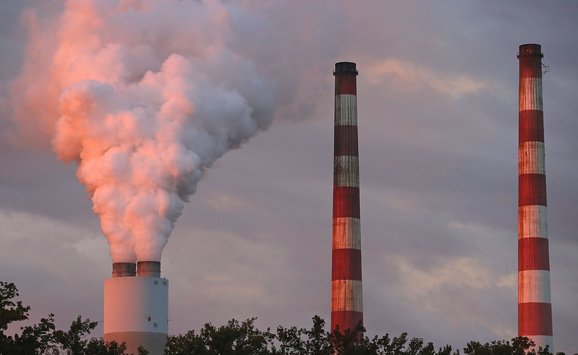The Trump administration’s latest attempt to prop up economically-suffering coal-fired generators comes in the form of regulatory relief in EPA’s proposed replacement for the Clean Power Plan (CPP). Unlike the CPP, the Affordable Clean Energy (ACE) rule, proposed by the Environmental Protection Agency (EPA) on August 21, 2018, embraces a source-specific definition of “best system of emissions reduction” (BSER). It limits the scope of emissions reduction to heat-rate improvements at existing fossil fuel plants with no eye toward eventual replacement of these plants long-term. Heat rate improvements increase plant efficiency and therefore reduce the volume of emissions per unit of energy produced. Without eventual transition away from coal-fired generators, however, heat rate improvements can only modestly reduce emissions. Consequently, EPA’s own analysis shows that in all scenarios, the CPP would have reduced emissions much more than ACE.
In addition to being less stringent overall compared to the CPP, the proposed ACE rule gives states the authority to set their own “standard of performance” based on federal recommendations. This flexibility in standard setting could result in particularly weak performance requirements.
One example of a pathway toward a relaxed standard is a short remaining life exemption. While the proposed ACE rule does not provide many details on how state plans should be structured, it does suggest that states set separate standards for plants close to retirement to avoid costly upgrades:
“In the case of a unit with a short remaining useful life…a state could set a standard using both an emission rate and a compliance deadline to address this instance. The emission standard would only be applicable if a source did not shut down by the compliance deadline.”
The long-run effects of such an exemption are uncertain. Depending on how the states choose to define the length of “short remaining useful life,” this exemption could give coal-rich states leeway to avoid regulating certain plants altogether. However, if plants with short remaining lives do not operate much currently, then requiring them to make investments to improve heat rates might lead to greater operation in the future with corresponding increases in emissions. According to analysis by RFF researchers, an average 4 percent improvement in fleet-wide heat rate efficiencies for coal plants would only lead to a 2.6 percent reduction in greenhouse gas emissions. The emissions reduction is lower than anticipated due to the rebound effect whereby increased plant efficiency makes plant operation more economically competitive, causing the plants to run more. With the rebound effect as a contributing factor, the exemption coupled with a near term retirement date would preclude that form of emissions bounce back and could actually result in lower emissions than if these plants were subject to the standard.
The exemption option, however, seems inconsistent with other recent attempts of the administration to delay the retirement of coal plants altogether through market circumstance relief. Citing concerns for fuel security and grid resiliency, President Trump directed the Department of Energy (DOE) in late May to use its authority under the Defense Production Act of 1950 (DPA) to develop a plan to delay retirements of “fuel-secure electric generation resources” by designating certain facilities as “Defense Critical Electric Infrastructure” (DCEI). (See here and here for RFF experts’ previous posts on this topic.) Concurrently, Federal Energy Regulatory Commission (FERC)-driven capacity market reform at PJM to correct for out-of-market subsidy payments (mainly for renewables) could also delay the retirement of certain coal plants due to higher capacity clearing prices and corresponding higher payments to coal plants. If these market interventions do prolong the lives of aging coal plants, the short remaining life exemption may not be an available method for states to avoid plant regulation.
The timeline of these actions will likely determine their relative impact. In order to determine which facilities will be designated as DCEI, the DOE is currently undertaking a 24-month analysis along with five national laboratories. In the meantime, DOE is required to delay further retirements of “fuel-secure” facilities, but it is unclear which measures it will take to do so in the interim and which facilities it will target. Even if all of these actions do move quickly, they will likely face legal challenges which could prolong the process. Meanwhile, once the ACE rule is finalized, states will have up to three years to design their plans. If these standards are completed and approved after the designation of DCEI facilities, then states may not find a need for an exemption provision. If state standards are approved prior to DCEI facilities, then the exemption provision may become a tool for these states to avoid costly upgrades while simultaneously waiting out other federal policies that could keep them online.
We hope to receive clarity on the following questions as these issues progress:
- Will the short remaining useful life exemption still be a viable option for states to limit regulation of plants if federal efforts to promote coal generation and protect coal capacity are successful?
- Will the short remaining useful life exemption actually prolong the lives of some coal plants by granting regulatory certainty to them, albeit for a limited time?
- Will efforts to provide market relief to coal plants in the name of national security, system resilience, or fuel diversity have an impact on the stringency of the ACE standards that states choose to adopt?
- What are the criteria for identifying DCEI resources? Will they be plants already close to retirement?
Answers to questions like these will help determine the projected impact of ACE and market interventions on coal retirements and the associated increase or decrease in emissions.






